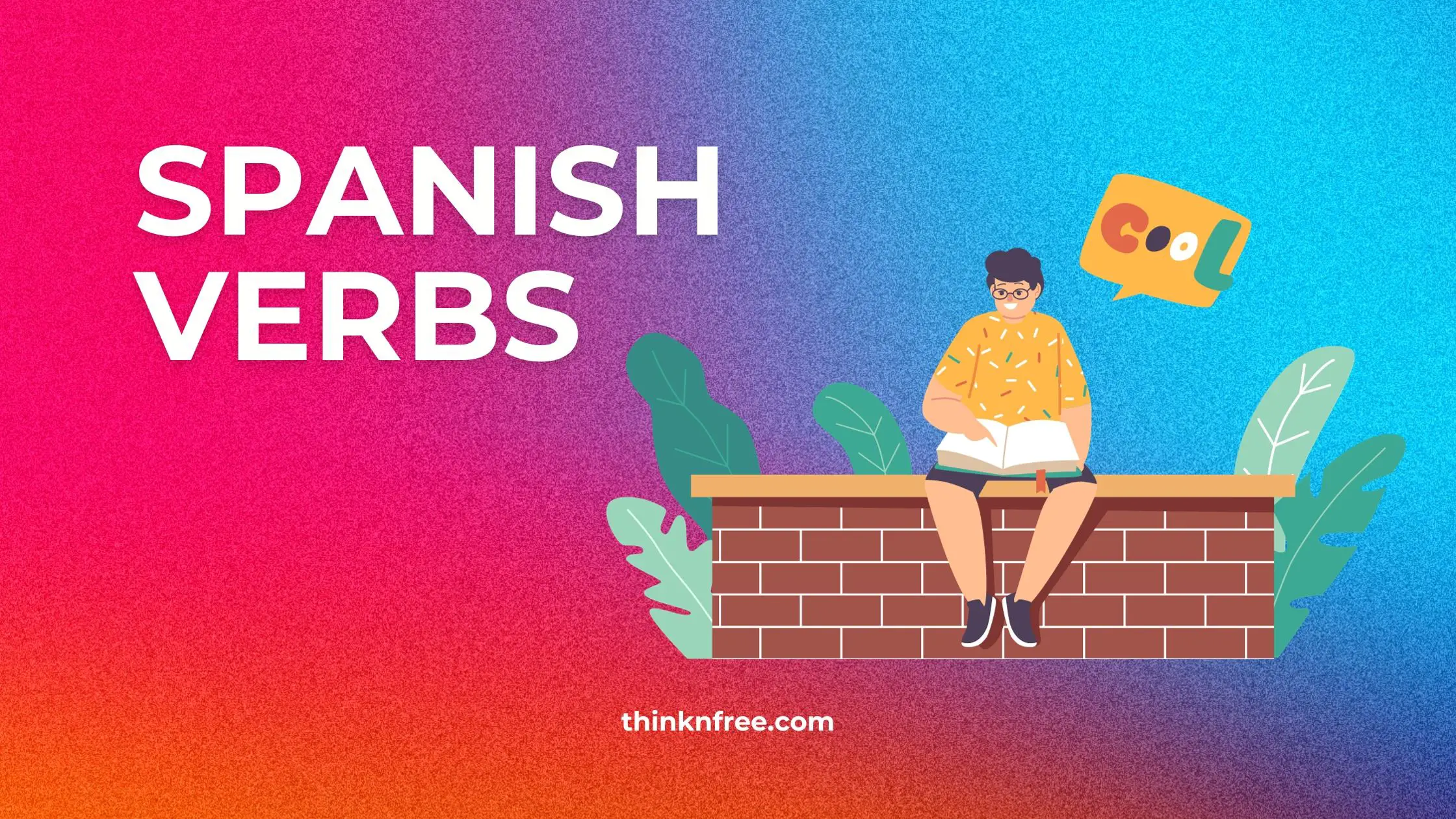Spanish verbs, ¡Hola, Welcome to another learning episode of our free Spanish guide course. Okay Let’s get to the point, What is the topic we are going to teach you today? “The Art of Spanish Verbs”. Explore the basics of Verbs in the Spanish language. In any language, verbs are the driving force behind every sentence. When we talk about Spanish lanbguage, It is deep understanding of espanol verbs is another essential part of effective communication with the Spanish Language. As we mentioned from the beginning, this guide will take you on a journey through the intricacies of Spanish verbs, Verb conjugation, Subjunctive mood, Reflexive verbs, and “ser” and “estar” equipping you with the knowledge needed to conquer this vital aspect of the Spanish language.
Our previous lessons: Free Spanish language Course, Quick Guide to Learn Spanish
What Are Spanish Verbs?
In the realm of language, verbs are the action stars, breathing life into sentences. They convey actions, states of being, and occurrences. In the context of Spanish grammar, verbs hold a prominent role in constructing meaningful sentences.
Examples:
- Action: El equipo de fútbol juega en el estadio. – The soccer team plays at the stadium. ( In this sentence, the verb “juega” (plays) represents an action taking place at the stadium.)
- State of Being: Ella está feliz en su cumpleaños. – She is happy on her birthday. (In this example, the verb “está” (is) denotes a state of being, indicating that she is in a happy state on her birthday.)
- Occurrence: En la noche, las estrellas brillan en el cielo. – At night, the stars shine in the sky.( Here, the verb “brillan” (shine) describes the occurrence of stars shining in the night sky)
Verb Conjugation in Espanol
Verb Conjunctions in Espanol, It is the art of adapting verbs to fit specific conditions such as tense, mood, and subject. In Spanish, verb conjugation is a dynamic process that includes both regular and irregular verbs, adding depth and nuance to the language.
Examples:
- Regular Verb: Yo hablo español. – I speak Spanish.
- Irregular Verb: Tú tienes una bicicleta. – You have a bicycle.
Learn more about Spanish verb conjugations.
Common Spanish Verb Tenses
Spanish boasts a rich palette of verb tenses. We’ll explore essential ones like the Present, Preterite, Imperfect, Future, and Conditional tenses, shedding light on their unique functions and conjugation patterns.
Example:
- Present Tense: Él aprende español. – He learns Spanish.
- Preterite Tense: El año pasado, nosotros visitamos París. – Last year, we visited Paris.
- Imperfect Tense: Cuando era joven, él estudiaba música. – When he was young, he used to study music.
- Future Tense: El próximo mes, tú trabajarás en una nueva empresa. – Next month, you will work at a new company.
- Conditional Tense: Si supiera cocinar, prepararía una cena gourmet. – If I knew how to cook, I would prepare a gourmet dinner.
Related: Demystifying Noun Genders and Articles in the German Language – Lesson 5
Subjunctive Mood in Spanish
The subjunctive mood is a distinctive feature of Spanish, used to express doubt, desire, or hypothetical situations. We’ll unravel the mysteries of this mood and provide practical examples to clarify its usage.
Example:
- Doubt: No parece que el proyecto vaya a terminarse a tiempo. – It doesn’t seem like the project is going to be completed on time.
- Desire: Mi madre desea que todos estemos juntos en Navidad. – My mother wishes for all of us to be together on Christmas.
- Hypothetical: Si ganara la lotería, compraría una casa en la playa. – If I won the lottery, I would buy a house at the beach.
Reflexive Verbs
Reflexive verbs add a unique twist to Spanish, reflecting actions back onto the subject. We’ll explore how these verbs are used and provide guidance on their conjugation with illustrative examples.
Example
- Usage: Me ducho todas las mañanas. – I shower every morning.
- Conjugation: Ellos se levantaron temprano. – They got up early.
Ser vs. Estar
What is Ser vs. Estar, Choosing between “ser” and “estar” can be puzzling for learners. We’ll dissect the distinctions between these two essential verbs, elucidating when to use each. Let’s see an example of how to use this Ser vs. Estar.
Example
- Ser: María es inteligente. – Maria is intelligent.
- Estar: María está cansada. – Maria is tired.
Using Spanish Verbs in Context
Effectively using Spanish verbs in real-life situations is a skill worth honing. We’ll provide valuable tips, highlight common mistakes to avoid, and offer practical exercises to sharpen your skills.
Resources for Learning Spanish Verbs:
Keywords: Learning resources, books, websites, apps, conjugation tools
To aid your journey in mastering Spanish verbs, we’ve compiled a list of helpful resources, including books, websites, apps, and conjugation tools to enhance your learning experience.
Related: Free German language course, Complete beginner guide
Summary of the article
In summary, Spanish verbs are the heartbeat of effective communication in the Spanish language. By embracing the intricacies of verb conjugation and usage, you open the door to fluency and confident expression. Keep exploring, practicing, and honing your skills, and soon you’ll find yourself navigating the Spanish linguistic landscape with ease.

I’m a tech-savvy writer and passionate software engineer who loves exploring the intersection of technology and creativity. Whether it’s building efficient systems or breaking down complex tech topics into simple words, I enjoy making technology accessible and useful for everyone.

